- Books Name
- Class-8 Science Book
- Publication
- PathSet Publications
- Course
- CBSE Class 8
- Subject
- Science
The Solar System
Interactive
- The Solar System comprises the sun, the planets, asteroids, meteors and other celestial bodies.
- There is a gravitational attraction between the sun and the celestial objects that keep them revolving around the sun.
- The sun acts as the main source of heat and light energy for all the planets in the solar system.
The Planets
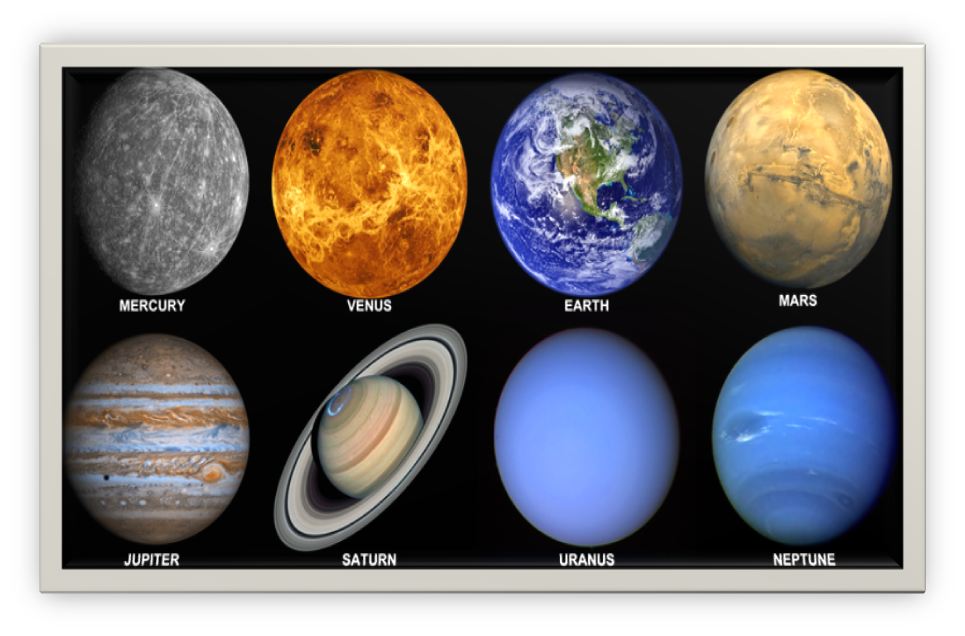
- Our solar system comprises 8 planets: Mercury, Venus, Earth, Mars, Jupiter, Saturn, Uranus and Neptune. The planets do not have their own light. They can reflect the light of the sun that falls upon them.
- The planets revolve around the sun in a fixed path called
- The period of revolution of a planet is the time that it takes to complete one revolution around the sun. As the distance between the sun and the planets increases the period of revolution of that planet also increases.
- All the planets also revolve around their own axis. The time of rotation of a particular planet is defined as the time it takes to complete one rotation.
- The planets have satellites or celestial objects that revolve around them.
- For example, the moon is a natural satellite of the earth. However, there are different artificial satellites also that revolve around a planet.
Why do planets not fall into the sun?
- We know that the sun exerts a gravitational force on all the planets. But they do not fall into the sun because they are also revolving around the sun in a fixed path. This revolution prevents them from falling off into the sun.
Mercury
- It is the planet that lies closest to the sun.
- It is the smallest of all the planets.
- It is difficult to observe Mercury because it hides in the glare of the sun.
- Therefore it can only be observed or viewed in the sky just before the sunset or before the sunrise.
- It has no natural satellite of its own.
Venus
- It is the brightest planet.
- It can sometimes be viewed in the eastern sky before the time of the Sunrise or in the western sky before the sunset. Hence it is often called morning or evening star.
- It has no natural satellite of its own.
- Venus rotates from east to west, unlike the Earth which rotates from west to east.
- Venus also shows phases just like the moon.
Earth
- Life exists only on earth.
- The earth has favorable environmental conditions such as the presence of atmosphere and water that enable the existence of life on the earth.
- The temperature conditions of the Earth are also favorable for the existence of life because it is at a perfect distance from the sun.
- The earth possesses a tilted axis which results in changing of seasons on the earth.
- The earth is covered with water naturally and therefore appears bluish-green when viewed from space. The earth possesses its own natural satellite - the moon.
Orbital and Equatorial Plane of the Earth
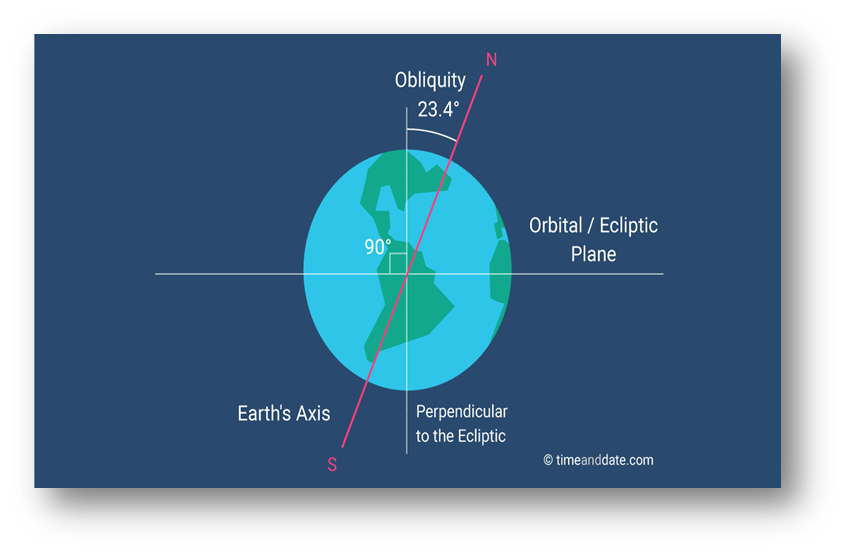
Orbital Plane of the Earth
We know that earth revolves around the Sun in an orbit. The plane in which it revolves around the Sun is called its orbital plane.
Equatorial Plane of the Earth
The Equator is an imaginary line drawn from the middle of the earth. The plane of the equator is called the equatorial plane.
The equatorial plane and the orbital plane of the earth are inclined at an angle of 23.5o. Hence, the axis of the earth is tilted at an angle of 66.5o to the orbital plane.
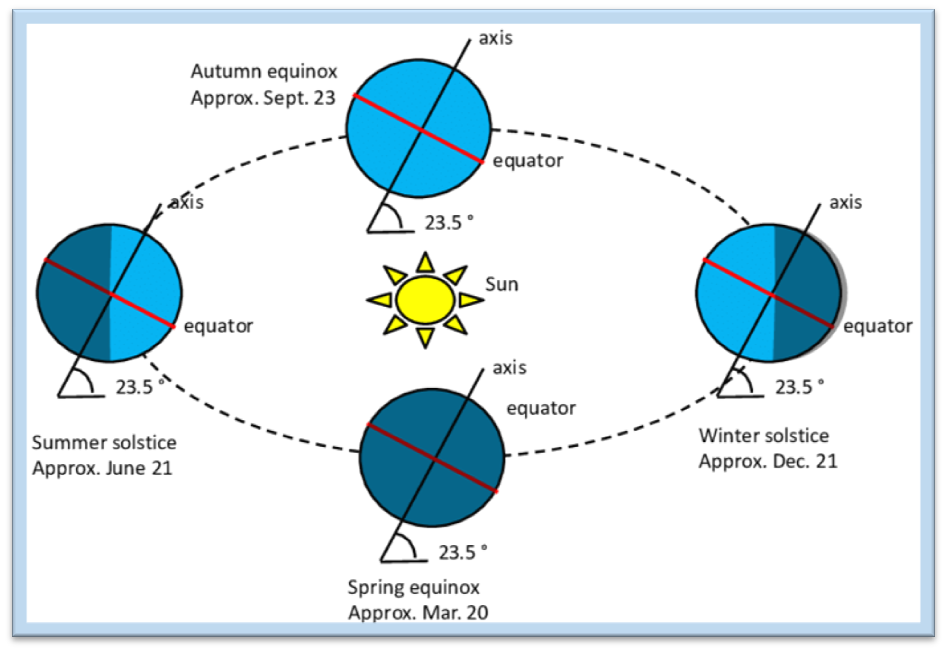
Mars
- It is called the red planet because it has a reddish colour.
- It has two moons of its own.
What is Mangalyaan?
- Mangalyaan is an Orbiter launched by ISRO (Indian Space Research Organisation) that orbits around Mars. It was launched in November 2013 and was placed in its orbit around Mars in September 2014 successfully. India is the first country that could place an orbital in its orbit in the first attempt.
Jupiter
- It is the largest planet in the solar system. It can comprise 1300 Earth-like planets.
- It does not have a high mass as compared to its size. The mass of Jupiter is almost 318 times the mass of the earth.
- The rotation time of Jupiter is small around 9 hours 55 minutes.
- Jupiter has many moons out of which 4 large moons can be viewed from the earth with the help of a telescope.
- Jupiter has thin rings around it.
Saturn
- Saturn has thick rings around it that can be easily viewed with naked eyes.
- It has 30 natural satellites of its own.
- The density of Saturn is less than that of water making it the least dense Planet of the solar system.
Uranus
- Just like Venus, Uranus rotates from east to west.
- It has 21 natural satellites.
- The rotation axis of Uranus is highly tilted.
- The atmosphere of Uranus comprises hydrogen and methane gas mainly.
Neptune
- It is the farthest planet from the sun hence it takes the most time to revolve around the sun.
- It has 8 natural satellites of its own.
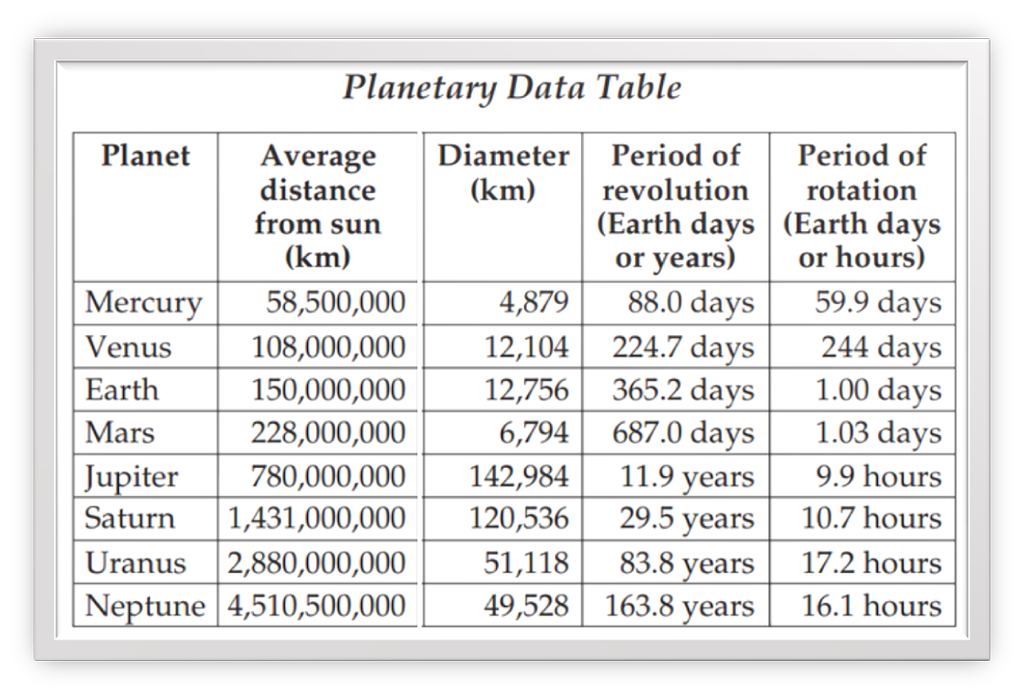
Inner and Outer Planets
- The first four planets of the solar system are called inner planets. These planets have few moons of their own.
- The planets after Mars are called the outer planets of the solar system. All these planets have a ring system around them and possess a large number of moons.
What are the differences between Stars and Planets?
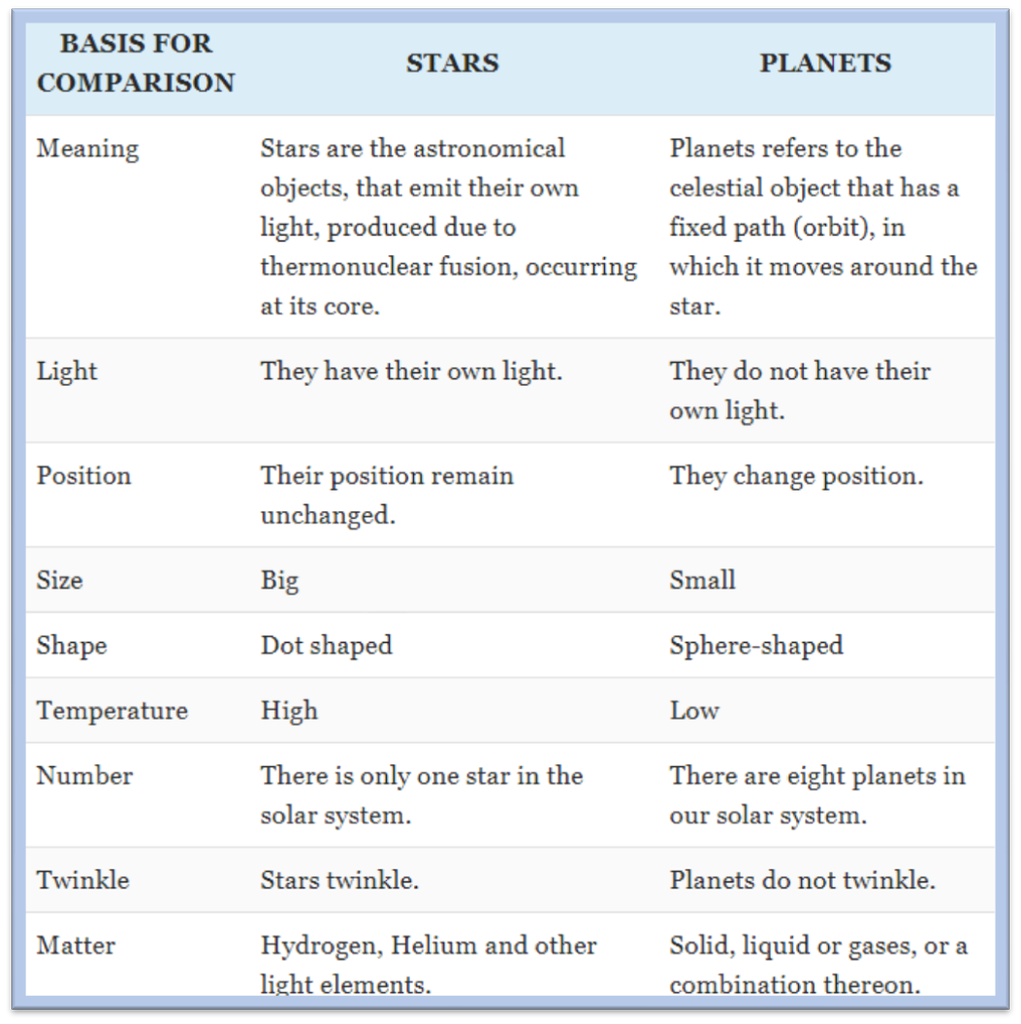

 PathSet Publications
PathSet Publications
